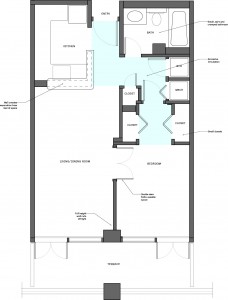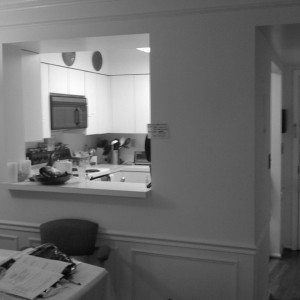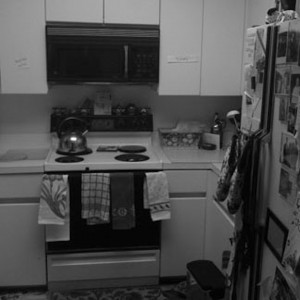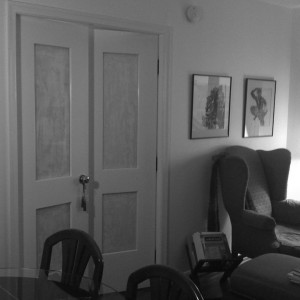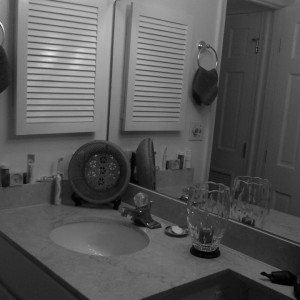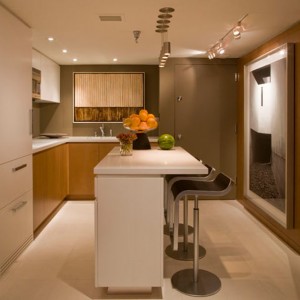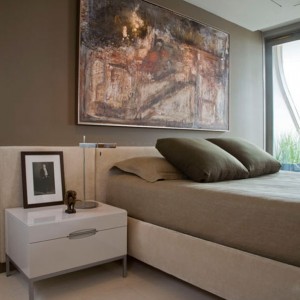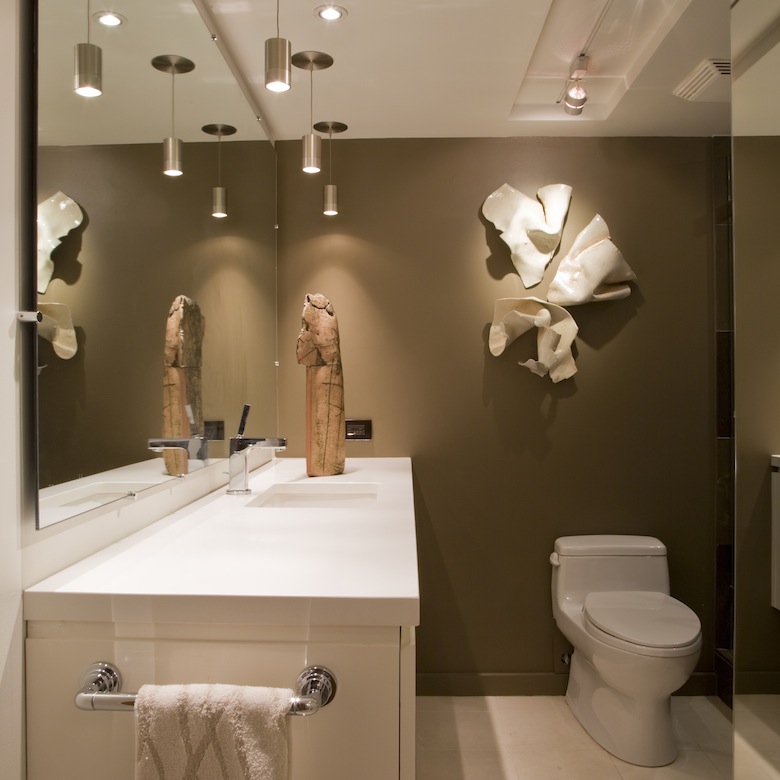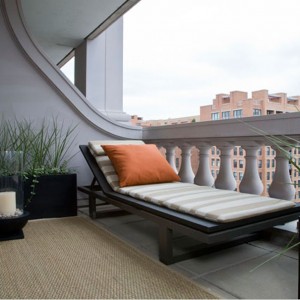Less Is More Again
Written by Ernesto Santalla on March 13th, 2013 // Filed under Uncategorized
Housing size has ballooned in the last 60 years. The average size of a new American home in 1950 was 983 square feet; by 2011, the average new home was 2,480 square feet. In 1950, an average of 3.37 people lived in each American home; in 2011, that number had shrunk to 2.6 people. This means that in the US we take up more than three times the amount of space we did 60 years ago.
Furnishings, electronics, vehicles, clothes and kitchen gadgets fill these homes; all at the service of size, which has equated with prosperity in the American suburb. At least until recently when a change has been set in motion. The younger generations want to live in centers of activity, major cities, or the satellite cities surrounding them. Empty nesters and those of retirement age who may want to downsize find themselves unable to do so because the drop in the housing market left them with a home worth less than anticipated.
As urban centers become more desirable, the cost of living rises and many are priced out of the market. Short term solutions include rooming situations and living with parents after college. There is another option. Live in less space.
By suggesting that we occupy less space, I don’t mean to suggest it as a sacrifice, because living well in smaller spaces is only viable when they are well designed. For that to happen, consumers, developers and real estate agents need to come together to redefine “desirable.”
The apartment is 600 sf. It was built as part of an urban redevelopment in Washington, DC in a mixed use building in the early 1990’s. Partly because of the speculative nature of the project, the units were built to modest standards.
Walls, corridors, doors, lighting and finishes made a small space seem smaller. Despite the general acceptance of open plans, we have a knee-jerk reaction to put up walls and labels on “rooms.”
Here are some images of what it looked like before the demolition crew arrived.
What’s the point in enclosing a kitchen if you’re going to make a big opening in the wall later, exposing the kitchen and the less than flattering lighting?
Another view of the kitchen. In an area this size, inside corners become a significant portion of the storage space. Hard to get to places become the perfect spot for things we forget we own and therefore never use.
Double doors are the wrong scale for this small apartment. Just look at how much wall space they occupy. Double doors also denote grandness, which strikes me as pretentious in this setting.
I am hopeful that medicine cabinets will become something we laugh about, like 8 track cassettes.
“La critique est facile, l’art est difficile.” Criticism is easy: art is difficult. That said, here’s what we did.
This is the view from the entry. Notice how the space, relieved from unnecessary walls, provides all the functionality without the clutter. The wall separating the areas was redesigned to create separation, but allow light from the window wall to come in to the space. The furniture was carefully selected to be the right size.
Once the walls were removed, the space can be used for much more than a kitchen. It’s also an entry, eating area and working area. The floor to ceiling elements, like the large photograph and the floor to ceiling cabinet on the left, relieve the fact that the ceiling is low in this area.
There is the right amount of space for all you need in the sleeping area.
Through careful space planning, we were able to significantly increase the size of the bathroom. It was just a matter of questioning convention and the rest fell in to place.
An outdoor space too!
It took a lot of effort to get from where we started to the final product and this project is not about living minimally, it’s about living consciously with what is necessary to live comfortably. And’s that how Less Is More Again. Designed for one person, 600 sf is 33% less than the national average in 2010. Ultimately, if we are to stop inflicting damage on the earth, we need to reduce how much we consume and how we consume it. It’s not about sacrifice, it’s about choices; informed choices.
Comments are welcome.
Looking for more from this project? Find it HERE.

